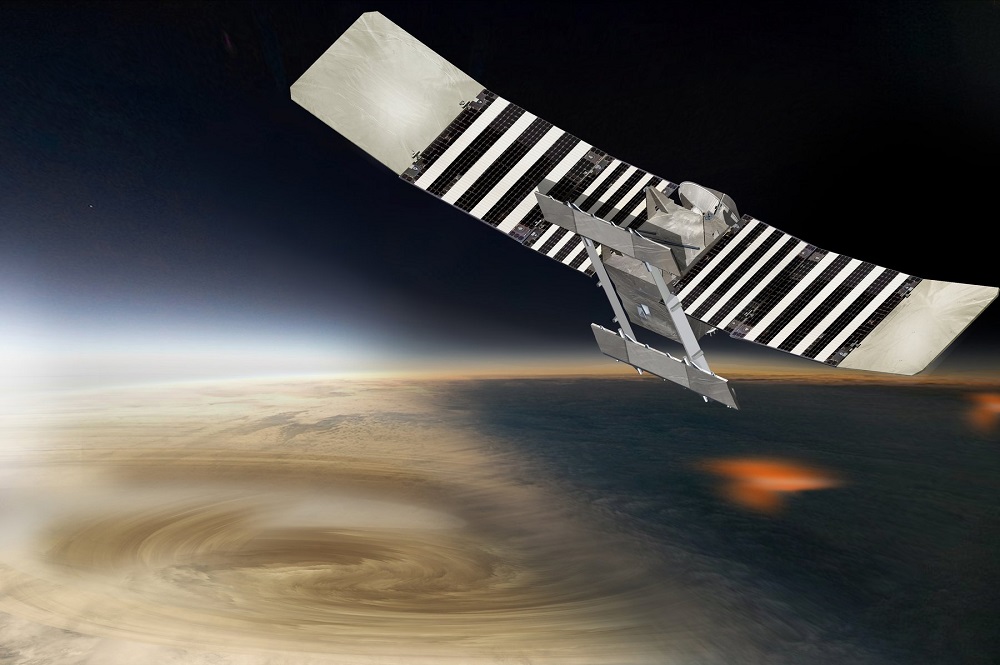WASHINGTON — A NASA mission to Venus already delayed by three years because of institutional issues is seeking to avoid another delay of nearly a year and a half.
Work on the Venus Emissivity, Radio Science, InSAR, Topography, and Spectroscopy, or VERITAS, mission resumed in October after NASA directed the project to stand down in fiscal year 2024. NASA decided in 2023 to delay the mission to no earlier than 2031, a three-year slip, to address “workforce imbalance” problems at the Jet Propulsion Laboratory, the lead center for VERITAS, found during the development of the Psyche asteroid mission.
While the mission’s leadership hoped to bring up the launch from 2031, Sue Smrekar, principal investigator for VERITAS, said at the recent annual meeting of the Venus Exploration Analysis Group (VEXAG) is now working towards a launch in June 2031.
“VERITAS is standing up” after the pause in 2024, she said. “It feels really great to have engineering funding again to be moving forward.”
However, in her presentation at the meeting, she raised concerns that NASA might seek to further slip the launch. The next opportunity to launch VERITAS after June 2031 is November 2032. “There’s a real possibility of a further delay to ’32,” she said.
That slip, she argued, posed several challenges to the development and operations of the spacecraft. One of that the mission features several instruments contributed by the French, German and Italian space agencies, development of which continued while work paused on VERITAS itself. Further delays could put work on those instruments further out of phase with the main mission.
“Another delay would mean that those contributions would actually be delivered before the spacecraft goes into the preliminary design phase,” Smrekar said. “It increases the potential for disconnects.”
It also means, she said, that the personnel who worked on those instruments may not be available when it is time, years later, to integrate them onto the spacecraft. Those agencies are also involved with the European Space Agency’s EnVision mission to Venus, which, after the VERITAS delays, will now be developed roughly at the same time as VERITAS.
There are also potential conflicts between EnVision and VERITAS in operations. If VERITAS launches in 2031, it will be completing its aerobraking phase at Venus to enter its science orbit around the time that EnVision arrives, creating little conflict since EnVision will rely on NASA for supporting its own aerobraking phase. If VERITAS launches in late 2032, though, the two spacecraft will arrive within weeks of each other in 2033. “It would put a strain on the aerobraking team,” she said.
Smrekar said there would also be science impacts to a delayed launch. That includes not being able to observe with instruments some landing sites of other missions, including NASA’s DAVINCI spacecraft, which would allow scientists to calibrate the VERITAS data with the “ground truth” from those spacecraft.
Further delays also create the risk of losing key personnel who would move to other projects. “During that stand down, we lost a lot of key science team members,” she said. “The longer we get delayed, the more chance of losing key personnel.” That included, she added, one person who was laid off at JPL earlier in the month as part of lab-wide layoffs that affected 5% of its workforce.
While VERITAS works to avoid further delays, both DAVINCI and EnVision are pressing ahead. In a separate presentation at the VEXAG meeting, Thomas Widemann of the Paris Observatory said EnVision was still planning a launch in December 2031. ESA recently changed the launch vehicle for the mission from an Ariane 62 to an Ariane 64, with the extra performance intended to reduce the time the spacecraft spends in aerobraking once at Venus to enter its science orbit.
DAVINCI is looking at launch opportunities in fiscal years 2031 and 2032, said Stephanie Getty, deputy principal investigator for the mission, in another presentation. A preferred launch date is December 2030, she said, which is “scientifically amazing” in terms of providing images of key regions of Venus during two flybys of the planet before arriving in early 2033 to deposit a probe in the planet’s atmosphere.
